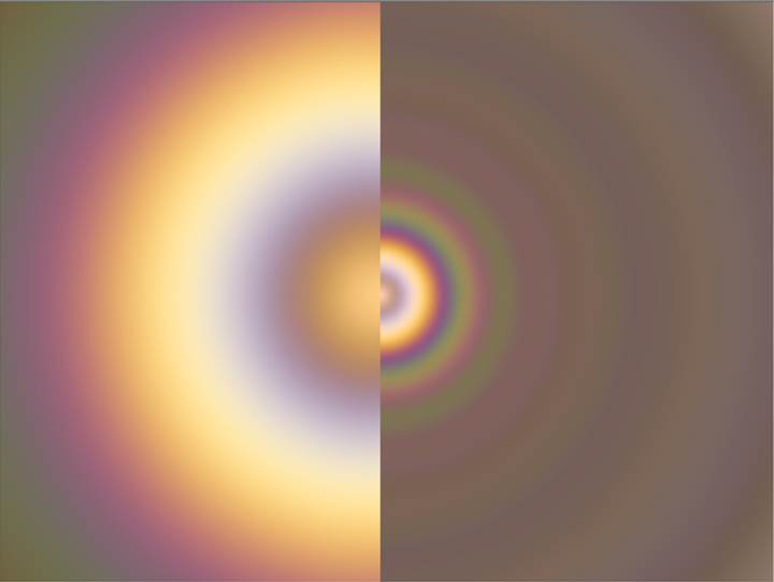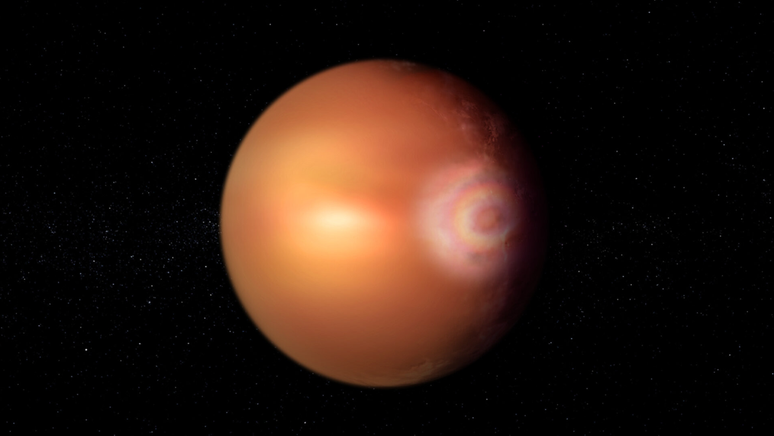The exoplanet WASP-76b appears to have displayed glory, a rainbow-like halo of light phenomenon
The exoplanet WASP-76b, known to have iron rains, surprised scientists once again. Astronomers have announced the detection of a bright halo known as a glory, similar to aa rainbow. Until then, these lights had only been seen on Earth and Venus.
- Deadly Exoplanets: Discover 5 worlds that would be fatal to humans
- Here’s everything we know about exoplanets – so far
The glory consists of a series of concentric rings around a bright center and requires special conditions to occur. “First of all, you need atmospheric particles which are almost perfectly spherical, completely uniform and stable enough to be observed over a long period of time,” explained co-author Olivier Demangeon.
Furthermore, the star needs to illuminate the planet directly, and the observer needs to see this light in the right position at the right time. In this case, the observatory in question was the European Space Agency’s Characterizing ExOPPlanet Satellite (CHEOPS) telescope.
Analyzing the CHEOPS data, the researchers noticed that there was an excess of brightness in the planet’s terminator (the line that marks the division between night and day). “This is the first time such a pronounced change in the brightness of an exoplanet has been detected,” Olivier added.

Therefore, the possible occurrence of glory in WASP-76b reveals something about the atmospheric characteristics of this planet. The phenomenon was analyzed in more than 20 observations over the course of three years, and the data indicates that aerosolized droplets are constantly present in the exoplanet’s atmosphere, or reappear there at a constant rate.
Found about 640 light-years from Earth, this world orbits a star slightly larger than the Sun every 1.8 days, meaning its dayside has a temperature of 2,400 ºC. The heat is so much that the the iron is vaporized, forming clouds. The possible presence of the droplets indicates that WASP-76b must have stable temperatures
According to the author, the discovery led them to hypothesize that the unexpected glow could be caused by strong localized and anisotropic (i.e. direction-dependent) reflection; therefore it must be the effect of glory. However, since the signal is very weak, further observations are needed to confirm that, indeed, WASP-76b exhibited the phenomenon.
The article with the results of the study was published in the journal Astronomy and astrophysics.
Source: Astronomy and astrophysics; Through: ESA
Trends on Canaltech:
- WhatsApp will have the ability to publish stories on Instagram
- The engineer dismantles the Cybertruck and is shocked by the battery
- The Fukushima reactor is photographed for the first time since the accident
- SpaceX video shows solar eclipse seen from space
- Did Silvio Santos’ film use the same Sega font?
- X-Men ’97 brings the first major connection to the MCU
Source: Terra
Rose James is a Gossipify movie and series reviewer known for her in-depth analysis and unique perspective on the latest releases. With a background in film studies, she provides engaging and informative reviews, and keeps readers up to date with industry trends and emerging talents.







